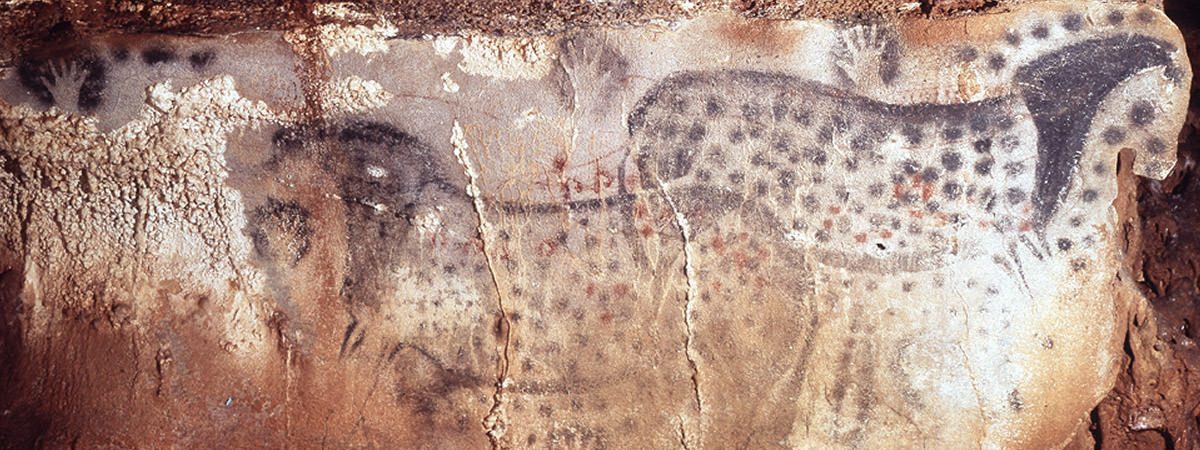Paleolithic Art refers to cave art and portable artworks created in the Old Stone Age or the Paleolithic Era. The period roughly corresponds with the Pleistocene or the last Ice Age. Cave art of the period primarily consists of animals in profile view and geometric forms. Sculptures are also dominated by depictions of animals. The few human representations are mostly of pregnant females with male depictions being a rarity. Here is an overview of Paleolithic Art including its characteristics, discovery, purpose and more.
S1 – Paleolithic Era
The Pleistocene is a geological time period which includes the last ice age when large parts of the world were covered in glaciers. It began about 2.58 million years ago and lasted till around 11,700 years ago. The Paleolithic period corresponds roughly with the Pleistocene. It began with the first known use of stone tools by hominins around 3.3 million years ago and lasted till the end of the Pleistocene.
The word Paleolithic is a combination of two Greek words palaios (old) and lithos (stone). Also known as the Old Stone Age, Paleolithic era covers almost the entire existence of humans. For all this time, humans used very simple stone tools produced by chipping away small thin pieces of stone in order to make an edge for a knife or ax. By the end of the Paleolithic period, animal bones and antlers were also being used for tools, especially pointed ones.
Excavation of Paleolithic sites provides another way of dividing the period. As the oldest material is at the bottom of the excavation, the oldest Paleolithic period is known as the Lower Paleolithic. Similarly, there is a Middle Paleolithic era and an Upper Paleolithic era. The Upper Paleolithic is further divided into four periods based on various sites; and different types of tools and tool-making technologies.

S2 – Paleolithic Art Characteristics
Rock Art
Paleolithic Cave paintings are composed primarily of animals in profile view and geometric forms. Mostly, individual images have there distinct space and are not encroached by others. In some cases the engraved or painted images do overlap. While some images do lie in the deepest and inaccessible areas of the cave, most are much closer to the surface and are found in perfectly obvious walls.
A prominent characteristic of Paleolithic cave art is the natural forms of the cave which are evocative of anatomy and natural postures of animals played a part in conception, placement and execution of paintings. The contours of the walls, whether convex or concave, were used to give volume to the painted animals. However, this is not the case for all images.

Evidence is accumulating to suggest that the acoustic qualities of the cave played a part in choosing the location for cave art. A study of three caves has shown that there is a correspondence between zones of high quality acoustics and the density of cave art. All periods of the Upper Paleolithic have yielded wind instruments. This suggests that the activity of painting and engraving might have been accompanied by singing, chanting and flute music.
Sculpture
Apart from paintings on caves, miniature sculptures and sculpture in bas-relief have been discovered at Paleolithic sites. They represent animals, humans and combined forms. These have been engraved and sculpted in stone, bone, antler and ivory. Nearly all animal species known to them have been represented.
In some cases, the reliefs provide views of characteristic animal behaviors like mating. Superimposition of finely engraved images is another characteristic of Paleolithic engraving. Human representations are few in comparison to animals, even in sculpture. Pregnant females dominate human depiction with males being a rarity.
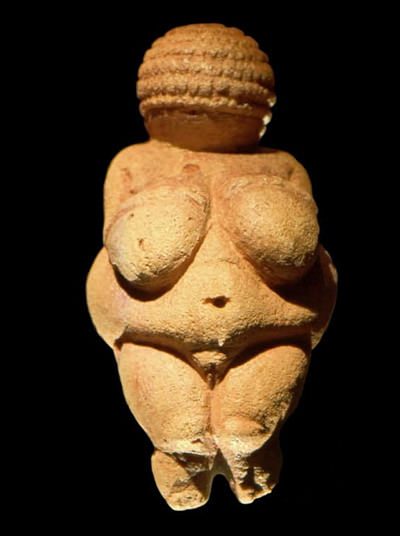
Among the most stunning examples of Paleolithic sculpture are the twelve carved ivory figures from Brassempouy in France. In these figures, Realism is nowhere to be found. Only essential qualities are defined. The ambiguity and simple geometry appears to be deliberate. Among the figures one can find nudes without arms and feet; breasts without nipples; and pubic triangles without sexual details.
S3 – Prehistoric Art Discovery
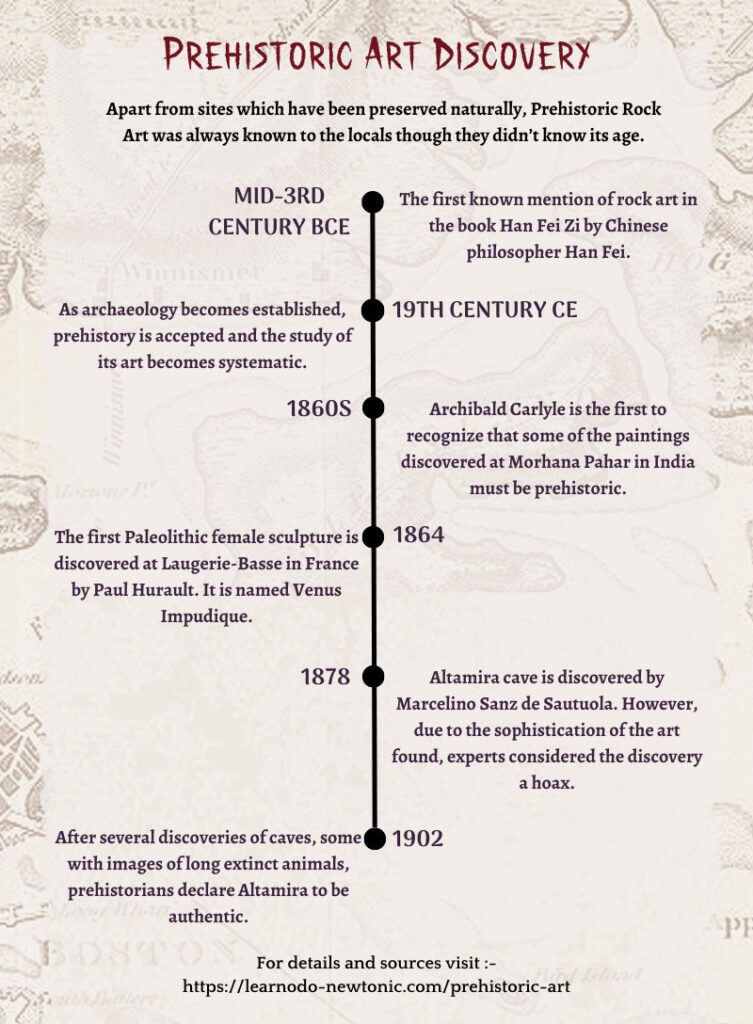
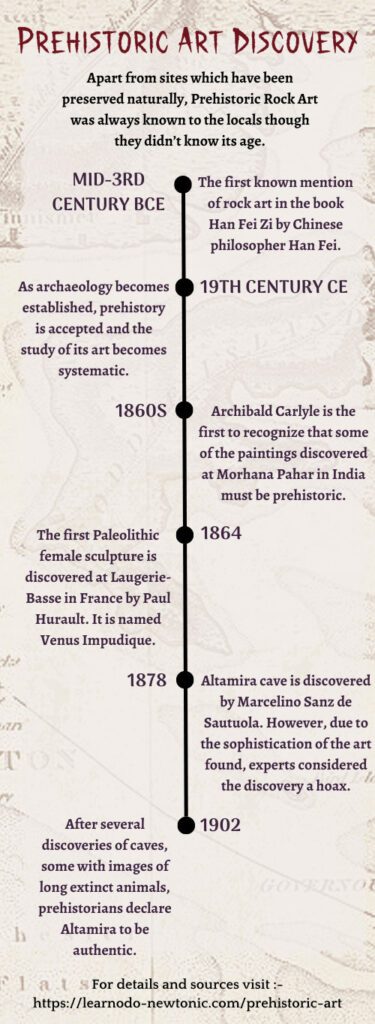
S4 – Some Important Paleolithic Art Discoveries
| Discovery | Type | Discoverer | Year | Nation |
|---|---|---|---|---|
| Altamira | Cave Art | Marcelino Sanz de Sautuola | 1878 | Spain |
| Venus of Willendorf | Statuette | Josef Szombathy | 1908 | Austria |
| Lascaux | Cave Art | Marcel Ravidat, Jacques Marsal, Georges Agnel and Simon Coencas | 1940 | France |
| Lion Man of Hohlenstein Stadel | Statuette | Joachim Hahn | 1969 | Germany |
| Grotte Chauvet | Cave Art | Jean-Marie Chauvet, Eliette Brunel and Christian Hillaire | 1994 | France |
S5 – Prehistoric Art Purpose
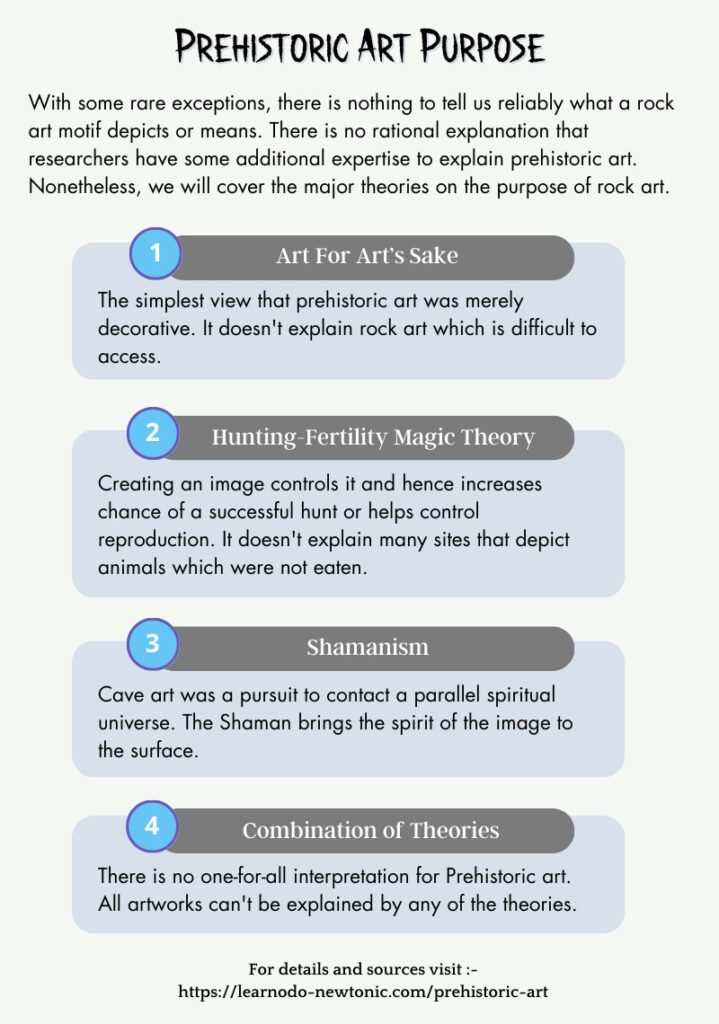

Sources:-
S1:-
Toth, Nicholas; Schick, Kathy (2007). “Overview of Paleolithic Archaeology”. Handbook of Paleoanthropology. Vol. 3. pp. 1943–1963.
“Paleolithic”. Merriam-Webster, Incorporated
Janson, H. W., Davies, Penelope J. E. “Janson’s History of Art: The Western Tradition”. p. 9.
S2:-
White, Randall. (2003). “Prehistoric art: the symbolic journey of humankind.” pp. 71-120.

